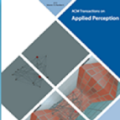In this contribution we revisit regular model checking, a powerful framework that has been successfully applied for the verification of infinite-state systems, especially parameterized systems (concurrent systems with an arbitrary number of processes). We provide a reformulation of regular model checking with length-preserving transducers in terms of existential second-order theory over automatic structures. We argue that this is a natural formulation that enables us tap into powerful synthesis techniques that have been extensively studied in the software verification community. More precisely, in this formulation the first-order part represents the verification conditions for the desired correctness property (for which we have complete solvers), whereas the existentially quantified second-order variables represent the relations to be synthesized. We show that many interesting correctness properties can be formulated in this way, examples being safety, liveness, bisimilarity, and games. More importantly, we show that this new formulation allows new interesting benchmarks (and old regular model checking benchmarks that were previously believed to be difficult), especially in the domain of parameterized system verification, to be solved.
翻译:本文中,我们重新审视了常规模式检查,这是在核查无限状态系统,特别是参数化系统(具有任意程序数目的当前系统)方面成功应用的强大框架。我们从存在性第二阶理论的角度,从自动结构的存续性第二阶理论的角度,对与保存长度的转导器进行定期模式检查进行了重新设计。我们争辩说,这是一种自然的配方,使我们能够利用软件核查界广泛研究过的强大综合技术。更确切地说,在这一配方中,第一级部分代表了(我们拥有完整解答器的)预期正确性能的核查条件,而存在性量化的第二阶变量则代表了要合成的关系。我们表明,许多有趣的正确性能可以通过这种方式形成,例如安全性、活性、两极相似性和游戏。更重要的是,我们表明,这一新配方允许新的有趣的基准(以及过去被认为困难的旧模式核对基准),特别是在参数化系统核查领域。





